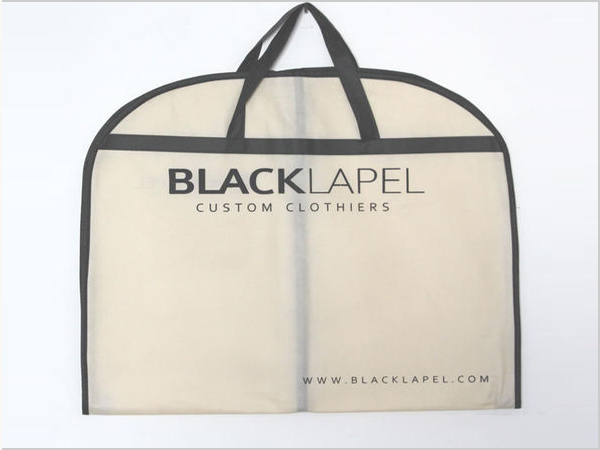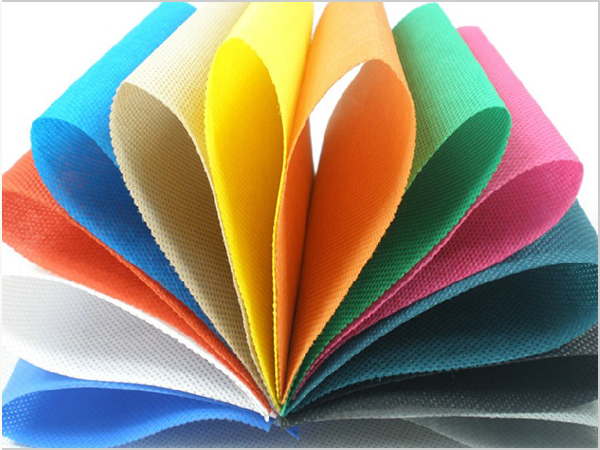- Xiangshuo has stood out in the field of spunbond nonwoven fabrics!
- How should enterprises respond to the impact of repeated tariffs
- PP non-woven fabric is a new type of environmental protection material!
- Under the tariff challenge, the textile and garment industry has a new opportunity
- Spunbonded non-woven fabric is an efficient, multi-functional modern material!

- Telephone: 0551- 66779966
- Cellphone: 18955130444
- Email: 58792982@qq.com
- Address: Building 1-2, East of Wubu Village Section, Hehuai Road, Wushan Town, Changfeng County, Hefei City, Anhui Province
"Collaborative innovation is an inherent requirement for modern textile industry to build development advantages under scale advantages, an inevitable choice to build innovation advantages under system advantages, an important support for creating high-end, intelligent and green advanced manufacturing capabilities, and a key move to promote industrial quality, efficiency and dynamic change in the new development pattern." The 2023 China Textile Industry Collaborative Innovation Forum was held in Keqiao district, Shaoxing city, East China's Zhejiang province, April 26, 2017. At the meeting, Sun Ruizhe, president of China National Textile Industry Council, pointed out that facing the future, Chinese textile enterprises should not rely on one "finger" alone, but should pool the wisdom and strength of all, shake the finger into a fist and fight accordingly.
Not confined to one corner
Collaborative innovation will build the future
Sun Ruizhe said, around industrial collaborative innovation, the industry first to "excellent skills", strengthen the ability of innovation. We will explore a development path that integrates original innovation, integrated innovation and open innovation. Second, we need to "unite the masses" and improve the innovation platform. Give full play to the role of textile product development base enterprises, technological innovation alliances, innovation consortiums, etc., improve innovation efficiency, and continue to build a scientific, market-oriented and standardized public service system. Third, we need to "gain momentum" and open up the cycle of innovation. We will adhere to a market-oriented approach, better meet the new requirements of combining the strategy of expanding domestic demand with deepening supply-side structural reform, and use market demand to drive and promote industrial upgrading.
"Facing the complex and severe situation at home and abroad and the increasingly fierce market competition, we have more and more deeply realized that the competition of the future industry is the competition of the whole industrial chain, and the practice of Keqiao has proved that innovation is the golden key to industrial development to the future." Yuan Xiaowen, member of the Standing Committee of Keqiao District Committee of Shaoxing City, said that nowadays Keqiao has gathered 1/3 of the printing and dyeing industry in China and has a complete textile industry chain system. The sales network covers more than 190 countries and regions around the world, and more than 1/4 of the world's fabrics are transact here. In 2022, the total transaction volume of online and offline market in China Textile City has exceeded 330 billion yuan. He pointed out that he hopes to take the event as an opportunity to turn the three advantages of market, industry and scientific innovation into three heights. With three "No.1 Project" as the blueprint, we will comprehensively build five major centers in the world textile field, accelerate the promotion of market echelons, make the industry fashionable and expand the city internationally, and mark a strong mark for Keqiao Textile to step forward into advanced manufacturing and high value-added industry.
New drive of data wisdom
Reshape textile fashion new ecology
Under the guidance of the development strategy of "Accelerating digital development and building Digital China", the integrated development of industry digitalization, networking and intelligentization has become the general trend.
Li Binhong, director of the National Textile Product Development Center, elaborated on the industrial transformation driven by digital technology from five dimensions of "new interaction, new supply, new consumption, new platform and new organization". In her introduction of digital and real integration innovation cases such as intelligent design, intelligent manufacturing and intelligent marketing, she summarized the digital technology value path of enabling enterprises with full link, that is, focusing on the carrier of value creation to form new products and services. Focus on the process of value creation to improve internal value such as asset operation efficiency; Focus on value-creating partners and enhance external value such as business performance ability.
Guan Zhen, chief digital innovation consultant at Shanghai Bugong Software Co., LTD., said that currently, intelligent supply chain has become an important means for enterprises to improve efficiency and optimize management. However, textile enterprises generally have problems such as opaque digital management, data security risks, and information islands, which lead to fragile supply chains and difficult coordination. He suggested that relevant enterprises can continuously optimize the digital intelligent system of supply chain and establish the digital intelligent control tower of supply chain, so as to realize the collaborative management of customer, research and development, marketing, manufacturing and other links, achieve efficient and transparent operation, give full play to the value of data, drive business changes, and thus enhance the competitiveness of enterprises and promote sustainable development.
Jing Yuan, director of ecological partnership of Amazon Cloud Technology industry, said that currently, more and more Chinese textile enterprises are gradually realizing "going out" in the wave of digital transformation. As the "propeller" and "engine" behind the overseas enterprises, Amazon analyzes and transforms the market insight and consumer behavior, and helps Chinese textile enterprises enter new regions and markets from four important aspects, including business flow, order flow, logistics flow and information flow, so as to bring its continuous innovation ability and technological advantages to overseas enterprises in more industries. To help them achieve value insights and business breakthroughs.
According to Zheng Qi, founder of Shanghai Qingjia Intelligent Technology Co., LTD., Qingjia's NAO virtual loom system can realize at least 100 fabric structures per second on a single computer according to demand through artificial intelligence calculation, and can present the fabric structure and clothing display effect on the computer screen in real time. Zheng Qi believes that the cost savings and efficiency of fabric development make enterprises more competitive.
Wang Baitong, general manager of Zhejiang China Textile City Group Co., LTD., said that in the relationship of harmonious coexistence and mutual promotion between modern professional market and industry, modern professional market has the characteristics of new economy, namely agglomeration, radiation and efficiency. In this process, the Textile City Group not only builds and manages the market, but also takes advantage of the unique advantages of the most abundant products, the most convenient procurement, the most sophisticated services, the best environment, the most perfect policies and the most cutting-edge development to participate in the industry's technology, innovation and fashion promotion, and constantly open up new business forms and explore new categories.
Activating innovation factors
Chain industry combined force innovation
In the collaborative innovation dialogue session, Chen Xinfu, senior partner and deputy general manager of Fujian Yongrong Jinjiang Co., LTD., believed that the key to innovation lies in collaboration. Through horizontal and vertical integration of industrial chain related elements, further stimulate the vitality of innovation. Horizontal integration is not limited to textiles, but also includes artificial intelligence, big data, automation, intelligent manufacturing, and information research. Vertical refers to the integration of advanced technology, advanced technology, advanced concept and scattered information in the textile industry chain.
Xu Yuanyuan, R & D manager of Konseni Group Co., Ltd. introduced that Konseni Group Co., Ltd. is a green advanced manufacturing industry group integrating dyeing, woolen spinning, spinning, semi-spinning, fancy yarn, high-grade fabric, import and export trade, digital logistics, intelligent manufacturing and information platform. It owns three major brands, namely classic cashmere yarn, high-end fancy yarn and fast fashion yarn. Enterprises always adhere to high positioning, high standards, high requirements, adhering to the development concept of green intelligence, science and technology fashion, through industry-university-research cooperation, upstream and downstream cooperation, domestic and foreign cooperation and other multi-directional collaborative innovation, forming talent, technology, capital, channels, market and other common force.
"All product development is inseparable from collaborative innovation. Facing the diversified and uncertain market situation, Lutai Group needs to work closely with upstream and downstream enterprises to develop more products and research more information technology to meet the needs of consumers and improve the competitiveness of the whole enterprise." Qi Yuanzhang, the manager of Technology Research and Development Department of Lufeng Weaving and Dyeing Co., LTD., explained by example that the cooperation between Lutai Group and Satri has greatly improved the fibrillation and hardening of regenerated cellulose fibers in contact with water. In cooperation with Chuanhua Zhilian, we developed fluorine-free decontamination - non-ironing - super brightening finishing technology for textile and clothing fabrics, which are easy to stain and difficult to remove.
Qu Yaping, president of Zhejiang Chuanhua Chemical Group Co., LTD., said that facing the challenges brought by the "two-carbon" goal, Chuanhua Chemical Co., Ltd. collaborates with upstream and downstream enterprises and multiple innovation carriers to break through. He pointed out that only through collaborative innovation can we truly achieve transformation, upgrading and high-quality development. He believes that collaborative innovation can be developed from two dimensions: vertical and horizontal. Vertical collaboration includes brand owners, flour suppliers, printing and dyeing factories and processing enterprises; Horizontal collaboration includes dyeing and chemical materials, equipment process manufacturing, chemical technology.
Nian Nian You is a leader company focusing on the Chinese style Hanfu circuit for seven consecutive years, and now has a number of well-known IP and brands in the industry. Wang Jianshuai, deputy general manager of Nianyu (Zhejiang) Culture and Technology Co., LTD., said that the reproduction of traditional clothing can grow into new categories, which need to be combined with modern technology and modern lifestyle; To make Chinese traditional culture more modern, we need to integrate culture, science and technology, and marketing organically to burst out the power of the brand, which requires the efforts of all textile people.
- Xiangshuo has stood out in the field of spunbond nonwoven fabrics!
- How should enterprises respond to the impact of repeated tariffs
- PP non-woven fabric is a new type of environmental protection material!
- Under the tariff challenge, the textile and garment industry has a new opportunity
- Spunbonded non-woven fabric is an efficient, multi-functional modern material!
- By the wind of gold, silver and silver, Keqiao Textile set sail
- PP non-woven fabrics occupy an important position in many fields!
- Textile industry is tested How should textile people cope with such challenges?
- What is the production process of spunbonded nonwovens?
- How to achieve revenue growth driven by policy dividend and technological revolution?



